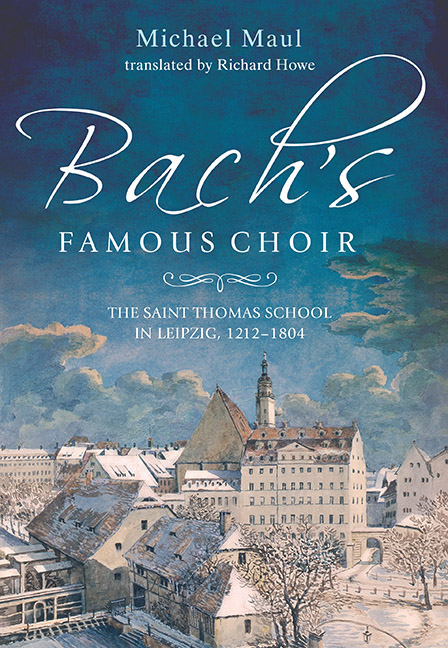Book contents
- Frontmatter
- Dedication
- Contents
- List of Plates
- Author's Note on the English Edition
- Translator's Note
- Preface
- Organization of the St. Thomas School in the 17th and 18th centuries
- Introduction
- I From Monastery to Municipal Music School, 1212–1593
- II How the St. Thomas School Became a Music School, 1594–1640
- III ‘Famous Throughout the Whole World of Music’, 1640–1701
- IV ‘Odd Authorities with Little Interest in Music’: the St. Thomas School in Crisis, 1701–1730
- V School for Scholars or ‘Conservatory of Music’? An ongoing conflict, 1730–1804
- Appendices
- Endnotes
- Bibliography
- Index of Persons
Introduction
Published online by Cambridge University Press: 04 April 2019
- Frontmatter
- Dedication
- Contents
- List of Plates
- Author's Note on the English Edition
- Translator's Note
- Preface
- Organization of the St. Thomas School in the 17th and 18th centuries
- Introduction
- I From Monastery to Municipal Music School, 1212–1593
- II How the St. Thomas School Became a Music School, 1594–1640
- III ‘Famous Throughout the Whole World of Music’, 1640–1701
- IV ‘Odd Authorities with Little Interest in Music’: the St. Thomas School in Crisis, 1701–1730
- V School for Scholars or ‘Conservatory of Music’? An ongoing conflict, 1730–1804
- Appendices
- Endnotes
- Bibliography
- Index of Persons
Summary
My work on this book began with a question: why did Cothen's court capellmeister Johann Sebastian Bach and two others in the premier league of German capellmeisters of his generation, Georg Philipp Telemann and Christoph Graupner, apply for the St. Thomas School cantorate in 1722/23? Or, more concretely, why would any leader of a famous court orchestra want to resign a position working with professional musicians in order to take a job with a municipal boys’ school and the ‘dusty robes’ of a cantor? Expressed in a broader historical context: how did it come about that the chronological list of the St. Thomas cantors is made up almost exclusively of the names of famous and historically significant musicians? No other municipal music institution in Germany, or for that matter in all of Europe, can boast a comparable list of prominent names, least of all over the span of half a millennium. From the end of the sixteenth century in particular and on into the nineteenth century the St. Thomas School cantors shaped the development of the whole of Protestant church music. Seth Calvisius, Johann Hermann Schein, Tobias Michael, Sebastian Knupfer, Johann Schelle, Johann Kuhnau, Johann Sebastian Bach, Johann Friedrich Doles, and Johann Adam Hiller were all among the most influential composers of their times, and they were so because they did not yet conceive of their office as being in the first place that of a choir director and a guardian of tradition but rather were at the same time creators of a repertory of their own works that was adopted in many other places. In other words, the real question is what made the St. Thomas cantorate so attractive from the late sixteenth century on through the seventeenth and eighteenth centuries that it consistently drew the best musicians, and did so long before those who held the office could adorn themselves with the honorific ‘Bach's successor’?
- Type
- Chapter
- Information
- Bach's Famous ChoirThe Saint Thomas School in Leipzig, 1212–1804, pp. 1 - 8Publisher: Boydell & BrewerPrint publication year: 2018



